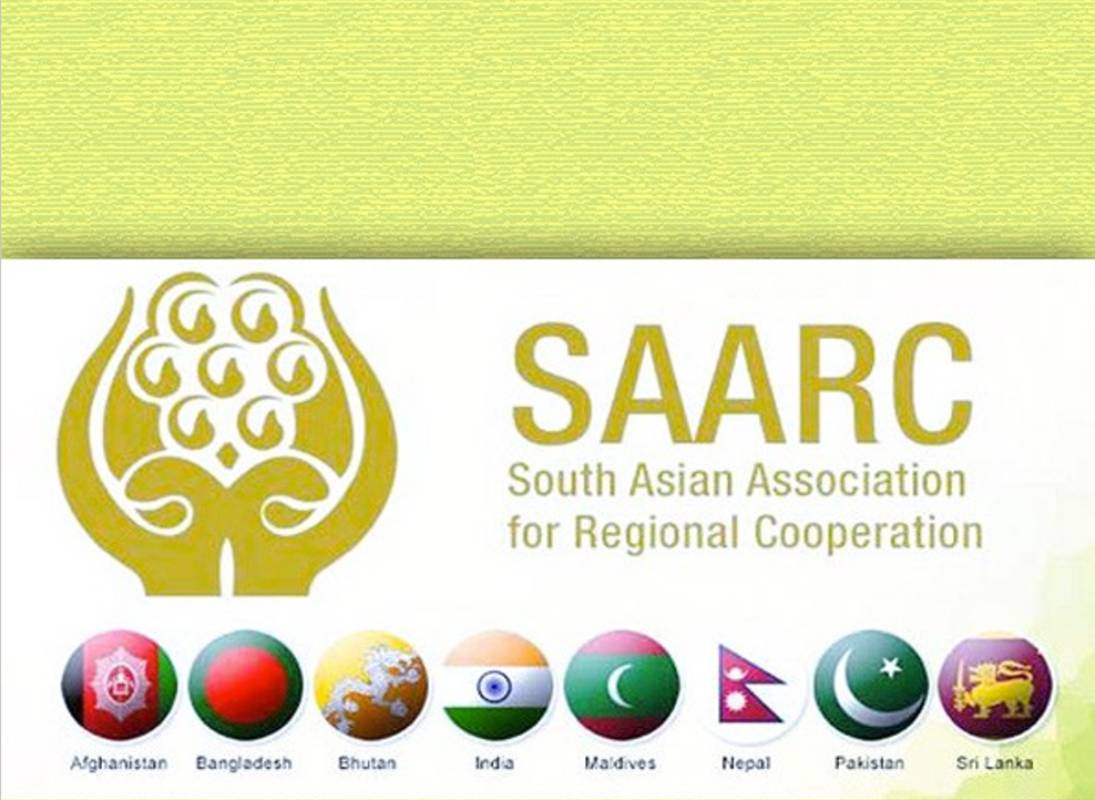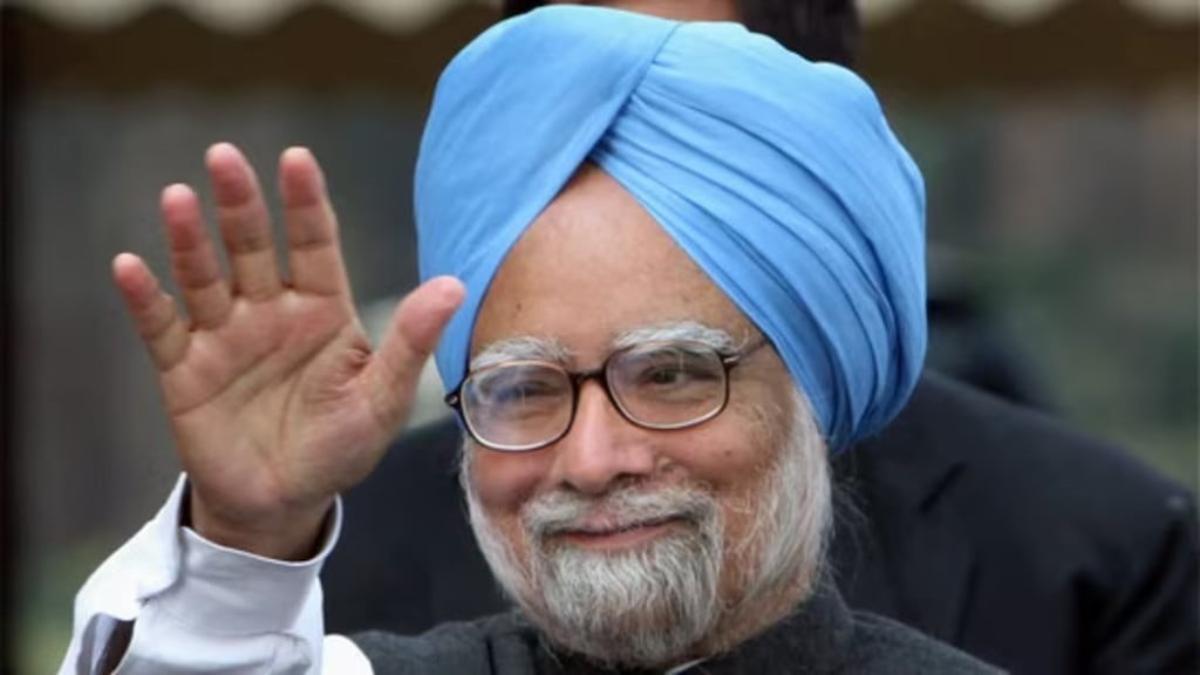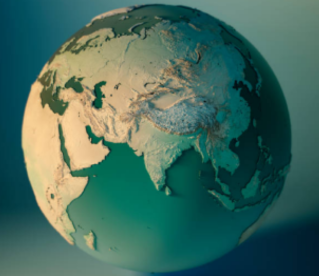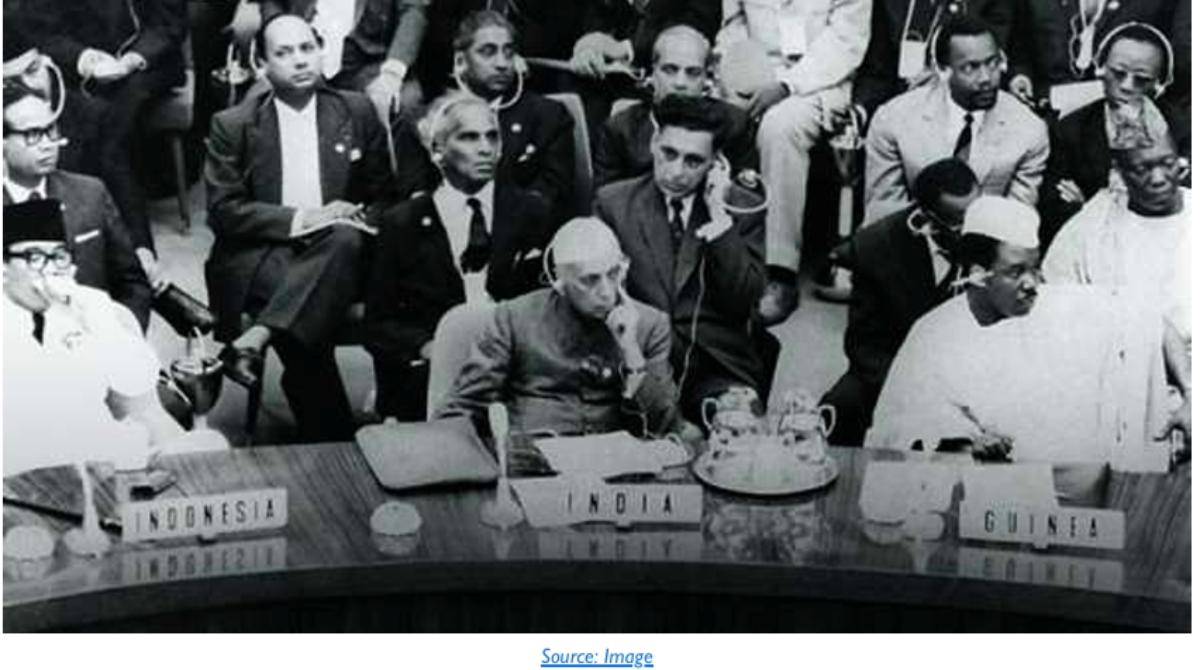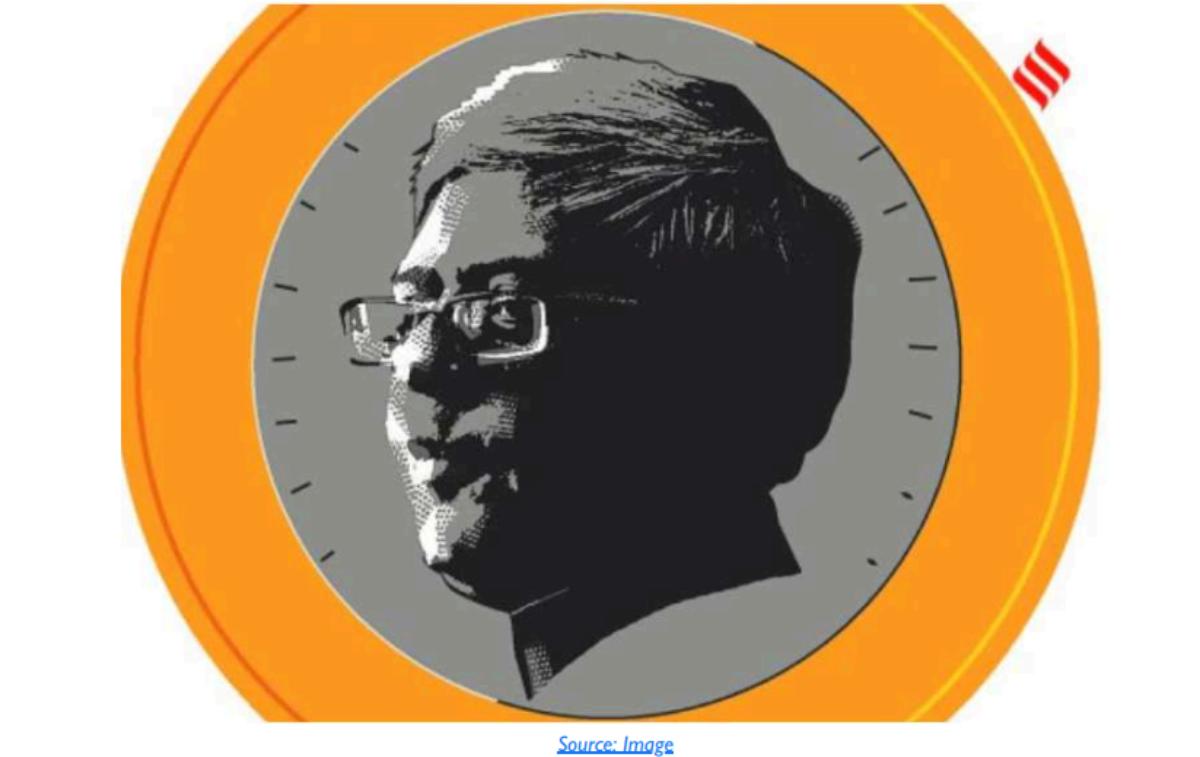India’s relations with its immediate neighbours have had a roller coaster ride.Trade,investments in infrastructure development projects, and security considerations are broadly the three pillars on which India’s relations with its neighbours are based. And these in turn are subject to power politics of competing political parties, nationalistic sentiments and the ever-present fly in the ointment, China.
During the election campaign in 2014, before becoming the Prime Minister, Narendra Modi stated that one of core components of his foreign policy will be “neighbourhood first” to foster cordial relations and synergetic economic development and he started well by inviting all heads of state/heads of government of South Asian countries in his inauguration and on the second day in office he held bilateral talks with all of them individually which was dubbed as a mini SAARC summit by the media.
Bangladesh
As for relations with Bangladesh is concerned, historical antecedents can only blur our appreciation of current developments. India may have played the midwife’s role in the birth of Bangladesh; Bangladesh may also have been a “basket case” in the past. But today, Bangladesh is not only ahead of India on many HDI parameters but its per capita income at $2,227 is higher than India’s $1,947 in FY 21.As Bangladesh rises, Sri Lanka finds India is not the only neighbour with deep pockets: the currency swap arrangement between Sri Lanka and Bangladesh seems to be the first time that any country other than India has provided macroeconomic support to another South Asian country.
Apart from the trade and investment related matters that are common in India’s bilateral relations with neighbours, Indo-Bangladesh relations are affected by three factors. First relates to the issue of insurgents and similar others, using Bangladesh territory for anti-India activities – made troublesome due to a porous border. Second is the more politically sensitive issue of managing, if not restraining, Islamic fundamentalist forces in spreading hatred against India.Third is the issue of illegal migrants from Bangladesh, and more recently the crossover of thousands of Rohingya refugees. This is a potent issue for India creating a heady cocktail of religion and electoral politics.Whatever may be the merits or demerits of CAA and NRC, particularly in the Indian states of Assam and West Bengal, these are highly emotive issues virtually splitting the society vertically.
In 2015, the border dispute that included maritime boundaries and enclaves was resolved. This was a long pending issue which could be resolved by passage of Constitution (100th Amendment) Act 2015 which ratified the 1974 land boundary agreement (LBA) between India and Bangladesh. India received 51 Bangladeshi enclaves (covering 7,110 acres) in the Indian mainland, while Bangladesh received 111 Indian enclaves (covering 17,160 acres) in the Bangladeshi mainland.
In 2017, two defence agreements were signed – the first such in this region – for defence equipment production, in spite of China being the largest supplier of arms to Bangladesh. It also covered counter terrorism, natural disaster and humanitarian assistance and disaster relief (HADR). The two countries also concluded 90 instruments in hi-tech areas involving electronics,cyber security,space,IT and civil nuclear energy.And year 2018 saw the inauguration of 130-km Bangladesh-India Friendship Pipeline to transport 4 lac MT of diesel to Bangladesh. Last year, with support from India under its ‘Development Partnership’ programmes, a number of old railway links are being revived, such as the Chittagong-Dibrugarh line, while new ones such as Mongla Port-Khulna,Agartala-Akhaura are also being developed.And soon, a new nonstop passenger rail service between India and Bangladesh will start rolling. Initially focused on tourism, the link will be utilized to facilitate other trade and commerce sectors in the newer future.
But things haven’t been always smooth. A recurring problem has been the frequent border killings of Bangladesh people by India’s BSF, with Human Rights Watch estimating 1,000 deaths during 2001-2011 ostensibly on issues related to armed dacoity, fake money transfer and illegal drugs. Bangladesh had also been critical of India’s blockade of Nepal in 2015 and termed it as violative of the Bangladesh-Bhutan-India-Nepal (BBIN) Initiative. In 2019 when India passed Citizenship Amendment Act (CAA), Bangladesh Foreign Minister and Home Minister cancelled their trips to India. Later, Deputy Minister of Foreign Relations also cancelled his visit. Bangladesh PM Sheikh Hasina commented that while CAA was not necessary, it was India’s internal matter.
In March 2021, when PM Modi was invited to attend 50th independence anniversary celebrations of Bangladesh which also coincided with the birth centenary of Sheikh Mujibur Rahman, the country’s founder and father of the current Prime Minister, Sheikh Hasina, the Bangladesh government had hoped it would be a memorable occasion. But Modi’s visit sparked violent protests.The protests were led by Islamists, students of madrassas (religious schools) and left-wing groups opposed to Mr Modi’s visit to Bangladesh. They accused him of pursuing anti-Muslim policies. Dhaka and the eastern district of Brahmanbaria witnessed some of the worst violence, resulting in 12 deaths.
Bhutan
Following an invitation by Bhutanese King Jigme Khesa Namgyel Wangchuk and PM Tshering Tobgay, Prime Minister Narendra Modi chose Bhutan as his first foreign destination, placing regional co-operation before global co-operation.
The 2014 visit was called by the media as a “charm offensive” that would also seek to check Bhutan-China relations that had recently been formalized. He also sought to build business ties, including a hydro-electric deal, and inaugurated the India-funded Supreme Court of Bhutan building. While talking about the visit, Modi said that Bhutan was a “natural choice” for his first foreign destination because of the “unique and special relationship” the two countries shared. He added that he was looking forward to nurture and further strengthen India’s special relations with Bhutan. His entourage included Foreign Minister Sushma Swaraj, National Security Adviser, and Foreign Secretary.
Optics apart, there are a few things that one needs to bear in mind to contextualize India’s evolving relations with Bhutan. India shares a 605 kilometer border with Bhutan and is its largest trading partner, accounting for 98 percent of its exports and 90 percent of its imports. While historical ties bind nations especially having common border, the burden of history can also cast a shadow if adjustments in relationships are not made reflecting contemporary realties, including peoples’ aspirations.
During days of British India, Bhutan became a protectorate after signing a treaty in 1910 allowing the British to“guide” its foreign affairs and defense.After India became an independent nation, Bhutan and India signed the Treaty of Friendship on August 8, 1949 which apart from establishing free trade and extradition protocols also called for peace between the two nations and non-interference in each other’s internal affairs. However, Bhutan agreed to let India “guide” its foreign policy and both nations would consult each other closely on foreign and defense affairs.
It’s important to note that this Friendship Treaty protects Bhutan but does not make Bhutan a protectorate as during British rule. This nuance is sometimes missed – perhaps in over- enthusiasm – as happened in August 1959 when following a rumor that China was seeking to ‘liberate’ Sikkim and Bhutan, Nehru stated in the Lok Sabha that the defense of the territorial integrity and frontiers of Bhutan was the responsibility of the Government of India. This statement was immediately objected to by the Prime Minister of Bhutan, saying Bhutan is not a protectorate of India nor did the treaty involve national defense of any sort!
Perhaps as a natural progression, the Bhutanese government expressed a need to renegotiate parts of the treaty to enhance Bhutan’s sovereignty. While a fresh treaty was signed only in 2007 that did away with the above irritants, the interregnum witnessed a few instances where Bhutan demonstrated its identity independent of India whether as UN member or voting against India in international fora.
Apart from century old ties, the high points in India-Bhutan relations revolve around trade, commerce, infrastructure projects, budgetary support, and capacity building and technical support to army.
A 2,000 strong Indian Military Training Team (IMTRAT) is permanently based in western Bhutan to train the Royal Bhutan Army, while other units regularly cooperate with the Royal Bhutan Army. From 2003 to 2004, the Royal Bhutan Army conducted operations against anti- India insurgents of the United Liberation Front of Assam (ULFA) who were operating bases in Bhutan and using its territory to carry out attacks on Indian soil.
In 2012–13 fiscal, India’s budgetary support to the Kingdom country stood at Rs 3000 crore, reaching Rs. 6000 crore in 2015–16 making Bhutan the largest beneficiary of India’s foreign aid. India’s “Economic Stimulus Package” for Bhutan’s slowing economy involves three hydro power projects of 1,416 MW, with three more of 2,129 MW under construction. There is however a growing disillusionment among a section of the Bhutanese population over India’s engagements in this sector. More recently, India has committed assistance of Rs. 4500 crore for implementation of development projects and Rs. 400 Crore for transitional Trade Support Facility during Bhutan’s 12th Five Year Plan (2018 – 2023). 51 large and intermediate projects and 359 SDPs/HICPDs are at various stages of implementation under the 12th Five Year Plan.
But it seems Bhutan has had to pay the price for its proximity to India. After the Doklam standoff between the armies of China and India, China made territorial claims on eastern Bhutan which may be an extension of its claims on Arunachal Pradesh.The Chinese have been engaged in border talks with Bhutan since 1984. They have reportedly never discussed the eastern sectors as the Chinese allegedly did not lay claim to it. But after Doklam crisis China issued a new map and unilaterally claimed territory in eastern Bhutan as its own. China is now doing in Bhutan what it did in the South China Sea — first create settlements and then bring in civilian population so that it becomes more complicated to settle the matter soon. This in turn, makes it more difficult for India also to bring up the tri-junction issue with the Chinese.
According to Rabilal Dhakal, who teaches in the country’s Royal Thimphu College, tensions intensified during the conflict in Doklam, “At the time, the Indian media manipulated the geography of Doklam to say that Indian forces were in Sikkim when they were actually in Bhutanese territory,” he said. “That irritated the Chinese so I will not be surprised if China makes even more claims given what transpired in Ladakh.” As has been the case historically, Dhakal said, Bhutanese sympathies continued to be with India. “The only problem is the Indian media which spreads all sorts of misinformation about Bhutan and keeps speculating that we, like Nepal, have sided with China,” he said. “That has put off a lot of people here. Actually we have been punished (by China) for allying with India… Bhutanese feel they have been dragged into India-China dispute.
Post the Doklam crisis, many steps have been taken to invigorate trade and connectivity between India and Bhutan, enabling smoother trade of goods and strengthening of sub- regional cooperation amid Chinese inroads into South Asia. Next, India has expedited plan to connect Bhutan via rail as China pushes hard along LAC. The rail link connect Mujnai (West Bengal) and Nyoenpaling (Bhutan) and the lndian Ministry of Railways has already commenced a feasibility study for it.This proposed network, first for the Himalayan state, will smoothen cross border movement.
India is also to open new trade routes with Bhutan to enable smoother sub-regional cooperation. With this latest development, Nagarkata will now be notified as a ‘permanent’ LCS without any commodity restrictions, therby allowing Bhutan to export inter alia boulders and river bed materials to India and other third world countries, throughout the year. India’s vaccine diplomacy was also launched when Bhutan was the first to be gifted Covid vaccine early this year. In May 2021, Assam chief minister Himanta Biswa Sarma met Consul General of Royal Bhutanese Consulate Phub Tshering to promote people to people contact between Assam and Bhutan, to increase the trade volume, and build new roads to take mutual relations to a greater height.
Nepal
As sovereign countries, the relationship of Nepal and India is based on the 1950 Indo-Nepal Treaty of Peace and Friendship. It included provisions that defined security relations between the two countries, and an agreement governing both bilateral trade and trade transiting Indian territory.The 1950 treaty and letters exchanged stated that “neither government shall tolerate any threat to the security of the other by a foreign aggressor” and obligated both sides “to inform each other of any serious friction or misunderstanding with any neighboring state likely to cause any breach in the friendly relations subsisting between the two governments.”
These accords cemented a “special relationship” between India and Nepal. The treaty also granted Nepalese the same economic and educational opportunities as Indian citizens in India, while accounting for preferential treatment to Indian citizens and businesses compared to other nationalities in Nepal.The Indo-Nepal border is open; Nepalese and Indian nationals may move freely across the border without passports or visas and may live and work in either country.
Nepal has however expressed strong desire to amend the 1950 Treaty to reflect current geopolitical developments. In 2008 during the visit of Nepalese PM, both countries issued a 22-point statement highlighting the need to review, adjust and update the 1950 Treaty. India also agreed to provide a credit line of up to Rupees 50 crore to Nepal to ensure uninterrupted supplies of petroleum products, as well as lift bans on the export of rice, wheat, maize, sugar and sucrose for quantities agreed to with Nepal. India would also provide Rs 10 crore as immediate flood relief. In return, Nepal will take measures for the promotion of investor friendly, enabling business environment to encourage Indian investments in Nepal.
Since then, both trade and investments have only increased. India is Nepal’s largest trade partner and the largest source of foreign investments, besides providing transit for almost entire third country trade of Nepal. India accounts for over two-thirds of Nepal’s merchandise trade, about one-third of trade in services, one-third of foreign direct investments, almost 100% of petroleum supplies, and a significant share of inward remittances on account of pensioners, professionals and workers working in India In the year 2017–2018, Nepal’s total trade with India was about US$8.2 billion; Nepal’s exports to India were about US$446.5 million; and imports from India were about US$7.7 billion.
A major crisis occurred in 2015 when Nepal promulgated its new Constitution but the Madheshis and Janajatis felt they were marginalized and being left out in the new constitution. These groups,the Madheshi in particular,then organized a blockade of the border in September 2015, leading to an economic and humanitarian crisis in Nepal five months after a devastating earthquake.The Nepalese government accused India of deliberately worsening the embargo by not allowing vehicles to pass from check-points where no protests were held, questioning whether the blockade of the long border was possible. Indian government, however, denied all allegations of any involvement in the blockade.
Of late, tensions have again brewed between Nepal and India, and Nepal and India’s relations have taken a turn decidedly for the worse, possibly for the first time since the ugly 2015 ‘blockade’, over a territorial dispute that had been festering for ages. Nepal stirred up public sentiments, and unilaterally amended its political map without holding talks through diplomatic channel over a road built in Lipulekh — a territory effectively under Indian control for more than 60 years.
Analysts say that much of this has also to do with political jostling among major parties in Nepal. By late last year, Nepal Communist Party (NCP) had already split into two factions
- one led by incumbent Prime Minister P. Sharma Oli and the other by Madhav Nepal and Pushp Kamal Dahal, both former prime ministers.Yet, in June 2020, in an unusual coming together, five former prime ministers of Nepal cautioned against alleged external influence in internal matters of Nepal.Though unstated, the reference to India was not lost on anybody.
In 2018, KP Oli rode to power on an anti-India wave. Thereafter, relationship between Oli and India became weren’t at the best, primarily due to two reasons: the Nepal-India Eminent Persons group (EPG) report and Nepal’s participation in BIMSTEC military drills. Then last year in 2020, ties between the two soured after both India and Nepal — one after the other
- published maps in which they included Kalapani, Lipulekh, and Limpiyadhura region in their side of the However, with the split in NCP, KP Oli’s relationship with India has improved, with Oli categorically stating “misunderstanding with New Delhi has been resolved”. Still – as the former Indian Ambassador to Nepal, Rakesh Sood says, a reset in India-Nepal relations is called for.
Pakistan
Of all neighbours, India’s relations with Pakistan has been most troubled.The partition of India and the birth of Pakistan in 1947 saw an orgy of violence, death, destruction and displacement of tens of thousands across borders.The schism was on religious lines, though there were and still exist strong cultural and language bonds. The countries have fought four wars, in 1948, 1965, 1971 and 1999. Treaties punctuated the wars. The 1965 war was followed by Tashkent Agreement, and the Shimla Agreement of July 1972 following dismemberment of Pakistan with the birth of Bangladesh. The Lahore Agreement of February 21, 1999 was ratified by the parliaments of both countries and signaled a major breakthrough in overcoming the historically strained bilateral relationship between the two nations in the aftermath of the publicly performed atomic tests carried out by both nations in May 1998. Widely popular in the public circles in Pakistan and hailed by the international community, little did Vajpayee know that Pakistani generals were plotting Kargil intrusion only three months later.
Pakistan has used a strategy of “asymmetric warfare” — using jihadi fighters for its own ends, and for this Pakistan has found it necessary to control Afghanistan as a pawn for its own political purposes. Apart from aiding terrorists to infiltrate Kashmir, Pakistan’s intelligence agencies have been responsible for numerous terrorist attacks in India, the most notorious being attack on the Indian Parliament in 2001, Mumbai attack in 2008 and the more recent Pulwama attack that took the lives of 40 Central Reserve Police Force (CRPF) jawans on 14 February 2019. Twelve days later on February 26, Indian Air Force fighter jets crossed the Line of Control and destroyed terror launch pads in Balakot in Pakistan.
Pakistan’s suspended bilateral trade with India in August 2019 after the constitutional changes in Jammu and Kashmir. Before that India exported about USD 2 billion and imported around USD half a billion worth of merchandise, which was already low compared to the potential. But trade, investment and socio-cultural exchange take a back seat at present.
The prospect of the Taliban coming back to control most of Afghanistan is a cause for worry to India as Pakistan is bound to use that regime to foment unrest in India, particularly Kashmir. In the midst of the current Afghan crisis, as we write this piece (12 July 2021), for the second time this year, foreign minister S Jaishankar will come face to face with his Pakistan counterpart Shah Mahmood Qureshi in Tajikistan’s Dushanbe this week for an SCO meeting to review worsening situation in Afghanistan. But they are unlikely to have any bilateral talks; just as they didn’t have any when they were together earlier at the same place in March for a Heart of Asia conference.
Sri Lanka
Relations with Sri Lanka, another maritime country with which India has age-old ties, is both delicate as well complex. Apart from trade, investment in infrastructure development projects, and security considerations, the ethnic Tamil issue is very much alive even after the decimation of LTTE and has strong emotive and political significance for Tamil Nadu and Sri Lanka.
The UN believes 80,000-100,000 people died in the 26-year conflict with the Tamil Tiger rebel group. Recently in March 2021, the UN Human Rights Council adopted a resolution giving Michelle Bachelet, United Nations High Commissioner for Human Rights, a mandate to collect evidence of war crimes committed during Sri Lanka’s 1983-2009 civil war. The resolution was sponsored by countries included UK, Germany, Canada. The resolution also criticised Sri Lanka’s judicial system, saying it was getting less impartial and that minority groups faced discrimination. But the government says the resolution is politically motivated.
While India abstained from vote on Sri Lanka at UN Human Rights Council and Delhi asked Colombo to continue reconciliation process with Tamils, eleven nations including Bangladesh, Pakistan and China voted against the resolution. “India’s approach to the question of human rights in Sri Lanka is guided by the two fundamental considerations of support to the Tamils of Sri Lanka for equality, justice, dignity and peace, and ensuring the unity, stability and territorial integrity of Sri Lanka,” said first secretary Pawan Badhe.
Maldives
Along with Bhutan, Maldives was also the first country to be gifted Covid vaccine. India’s vaccine diplomacy is yet another testament to its Neighbourhood First policy, in which Maldives occupies a special and central place.This is reciprocated in full measure by the ‘India First’ policy of the Government of Maldives. Prime Minister during his visit to Maldives in June 2019 rightly said ‘Neighbourhood First is our priority; and in the Neighbourhood Maldives is priority’.
Yet, last year, the Progressive Congress, a coalition of the opposition Progressive Party of Maldives (PPM) and the People’s National Congress (PNC), spearheaded an “India Out” campaign over alleged Indian military presence from last year. In addition to anti-India rallies and campaigns on social media, the opposition took its fight to Parliament as well. In late August 2020, during a massive anti-India rally in the capital, Male, a high-rise building that housed the State Bank of India went up in flames. It was during former President Abdulla Yameen’s presidency that Maldives’ relations with China warmed considerably. The archipelago joined the Belt and Road Initiative and borrowed heavily from the Chinese to fund infrastructure projects. The period saw a sharp downturn in India-Maldives relations. But ever since Ibrahim Mohamed Solih became president of the Maldives, India-Maldives relations have been on an upswing.
It is the Islamist news portal Dhiyares and its founder Ahmed Azaan that are running an ‘India Out’ campaign to whip up anti-India sentiment in the Maldives.A note verbale from the Indian high commission to the Maldivian foreign ministry, was published in the Maldivian media. In the letter, India complained about “recurring articles and social media posts attacking the dignity of the High Commission, the Head of the Mission, and members of the diplomatic staff by certain sections of the local media…These attacks are motivated, malicious and increasingly personal” and requested the Maldivian government to ensure the protection of the mission and staff.The high commission told the foreign ministry that these could “damage the time-tested and mutually beneficial bilateral relations between India and the Maldives”.
Mauritius
Along with Maldives, Mauritius has been important for India to secure its maritime security agenda. Just recently in February 2021, Indian Foreign Minister Dr. S Jaishankar went on a four-day visit to the Maldives and Mauritius – holding high-level meetings in both countries, including with the defense, foreign affairs and finance, underlining the strategic intent of the trip. Apart from financial assistance to major infrastructure projects, India and the Maldives also signed an agreement to develop, support and maintain an important naval facility for the Maldivian armed forces, including training.
Mauritius and India signed a Comprehensive Economic Cooperation and Partnership Agreement (CECPA) which will be significant in enhancing Mauritius’ capabilities to patrol and maintain effective surveillance over its extensive maritime spaces. India also extended a $100 million defense line of credit that will support acquisition of defense assets from India. The joint statement issued during the visit said that “these initiatives underline once again that the security of Mauritius is the security of India; in the prosperity of Mauritius is our prosperity.”2
As one analyst has pointed out, for now, India appears to be maintaining a close watch on China’s growing presence and influence in the Indian Ocean region.This in fact has prompted New Delhi to improve its strategic game in engaging its Indian Ocean neighbors. But India’s challenge has always been in scaling up the aid and assistance sufficiently to take advantage of the opportunities and goodwill that exist in these countries, especially compared to what China can offer. Nevertheless, for the time being, Maldives and Mauritius appear to be success stories in Indian outreach in the region.
Myanmar
Even before the military coup of 1st February 2021 which deposed the democratically elected members of the country’s ruling party, the National League for Democracy (NLD), the military had always played a critical role in Myanmar, running the the country along with the elected civilian government in a unique hybrid system. Since historically, there has been this relationship between civil and military, it is hard to refashion a relationship that sees a sharp departure, one in which the military has no place in civilian government. But it is important to see this relationship at two levels. In the first level, this relationship carries over in decision making in civil and military matters. In the second level, it is impacted by ethnic conflicts, even civil war, for a long time.
India’s relations with Myanmar operate under the shadow of China. Even China is the key player in the country where India too has age-old ties. India wants to make Myanmar the springboard for its Act East policy. Sometime towards 2010, China started making strategic investments in gas pipeline projects, special economic zones, and later expanding to BRI (China-Myanmar economic corridor); the new Yangon Project3 , and a project to develop a multi-billion dollar deep sea port in Kyaukpyu on the coast of Bay of Bengal, and three border cooperation zone near China border. So, what China is doing is building a whole network right from its border till Bay of Bengal.
India on the other hand has also a large number of projects in Myanmar. But while China’s recent investment is strategic, India’s projects are more people oriented and developmental. They have to do more with capacity building, science and technology, agricultural research, and such others. Of late there’s some movement towards connectivity projects, high voltage grid connectivity and also in aviation.
It was only recently that India took note of the hybrid political governance system of Myanmar, reflected in the joint civil-military delegation visit from India to Myanmar. It is possibly an acknowledgement that reservation of military seats in Parliament makes changes in Constitution difficult; so the civil-military combine in Myanmar’s governance is likely to stay. However, the Myanmar army’s action on Rohingyas got very unpopular international attention. India is aware that IS (Islamic State) is trying to penetrate ARSA (Arakan Rohingya Salvation Army) and China is also supplying arms, but Myanmar has not publicly acknowledged these. In these circumstances, India is helping build a south- north road rather than a north- south road.
India is now supplying submarines, guns and other military hardware to Myanmar. It is also providing training in our military institutes. There is also coordinated training, exercises, and joint operations as we saw in joint operations in June 2015 when many ULFA militants were flushed out. India has now a joint agreement with Myanmar under which neither country is to provide shelter to insurgents.
A key question emerges: whether India needs to calibrate its relations with Myanmar? Since seventy percent of Myanmar’s population depended on the agri-rural sector, India’s focus on developmental and people-centred issues was appropriate. But it was also necessary to move beyond capacity building and promote livelihoods for small and medium industries. And this approach should extend to the Indo-Pacific region. (More significantly), India should not compete with China on big ticket, but on economy and people issues – issues on which China is not interested.
Concluding Observations
There’s one common thread that runs across that tends to upend India’s relations with neighbours. No matter how much aid and support is provided, if the popular opinion is not managed, relations will sour. These in turn are as much the product of India’s domestic policies, generating counter currents abroad. In the age of social media, the tinder box is ever ready to ignite, as we have seen in the Maldives, Nepal and Bangladesh. Soft power can only be ignored at great peril.
As C. Raja Mohan, Director, Institute of South Asian Studies, National University of Singapore, says “there’s no happy end-state in India’s relations with its neighbours (with a) damned if you do, and damned if you don’t” predicament. But the soft power of India also lies with how civil society, press and political parties shape the discourse, and these do impact on bilateral relations as no democratically elected government turns a blind eye to these sentiments. But sometimes it is necessary to reign in statements that have the potential to adversely affect bilateral relations. As another analyst put it:
“Remarks from among the political class which alluded to the supposed one crore undocumented Muslim immigrants in West Bengal who are “thriving” on the government’s Rs 2 per kg subsidised rice and are involved in arson should have been censured for their lack of sensitivity by the larger political establishment. Statements like “half of Bangladesh will be empty (vacant) if India offers citizenship to them (Bangladeshis)” reek of an arrogance that is distasteful in its implications. In the face of these repugnant announcements by politicians, it becomes difficult for the leaders of our neighbouring nations to consider warmer relations.” 4
Footnotes:
2.“Jaishankar Reaches Out to Delhi’s Indian Ocean Partners”,The Diplomat, February 25, 2021 https://thediplomat.com/2021/02/jaishankar-reaches-out-to-delhis-indian- ocean-partners/
3.The line would make up about half of a planned 1,215km link between the new port and Kunming, the capital of China’s Yunnan province, via Mandalay and the border town of Muse (pictured).This line was priced at about $20bn in 2011.The project involves building a high-speed railway line from Kunming to Muse on the Myanmar- China border and from there on to Mandalay, terminating in Kyaukphyu port in Rakhine province. A railway line from the same corridor will branch out to Yangon port.
4.Vaishali Basu Sharma, “India’s Lack of Respect for its South Asian Neighbours is Now Mutual:The arrogant big brother attitude that disparages and belittles the nations at its borders will leave India isolated in any face-off with a big power”,The Wire, 20 Aug, 2020 https://thewire.in/diplomacy/india-south-asia-neighbours-foreign-policy-respect

